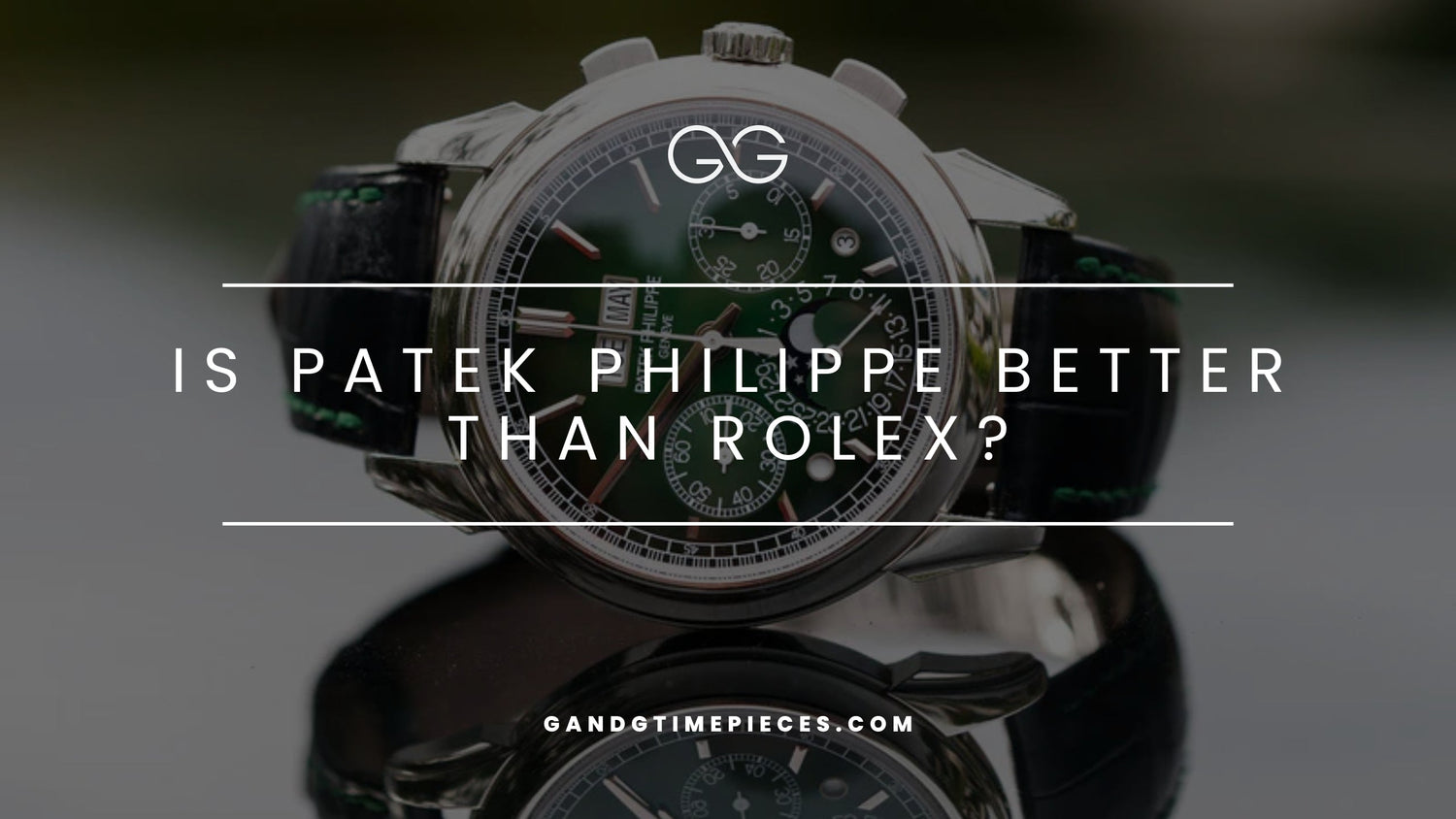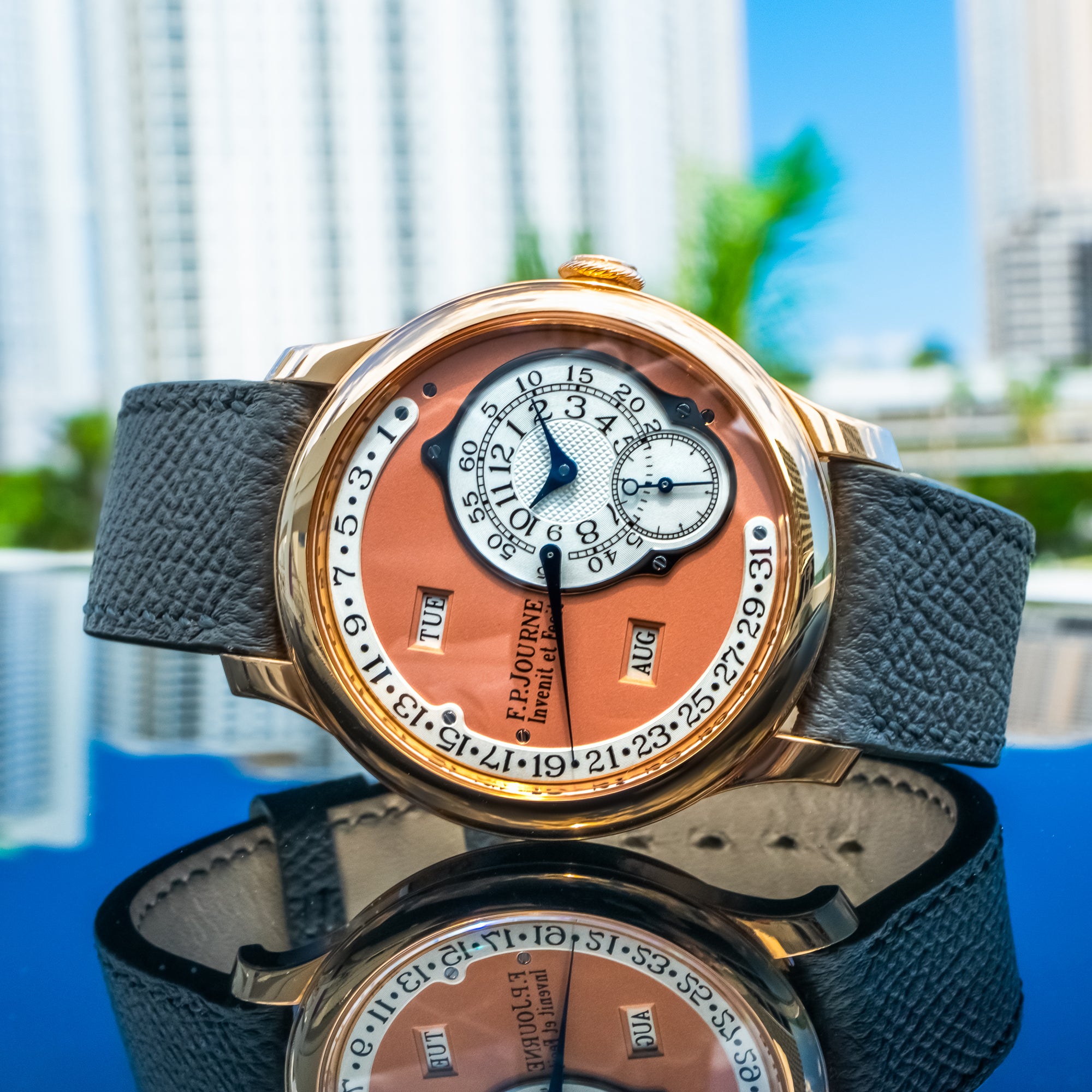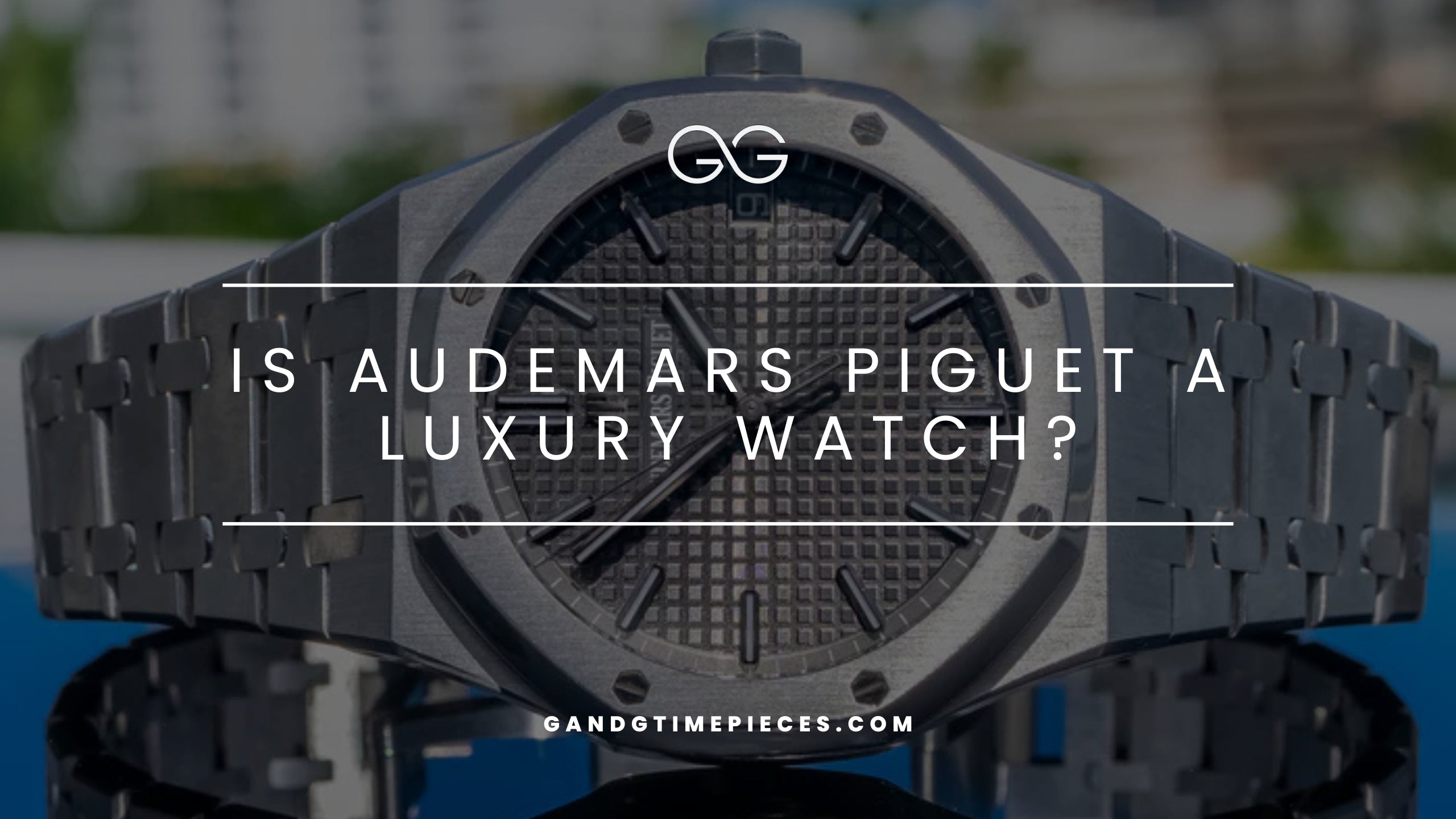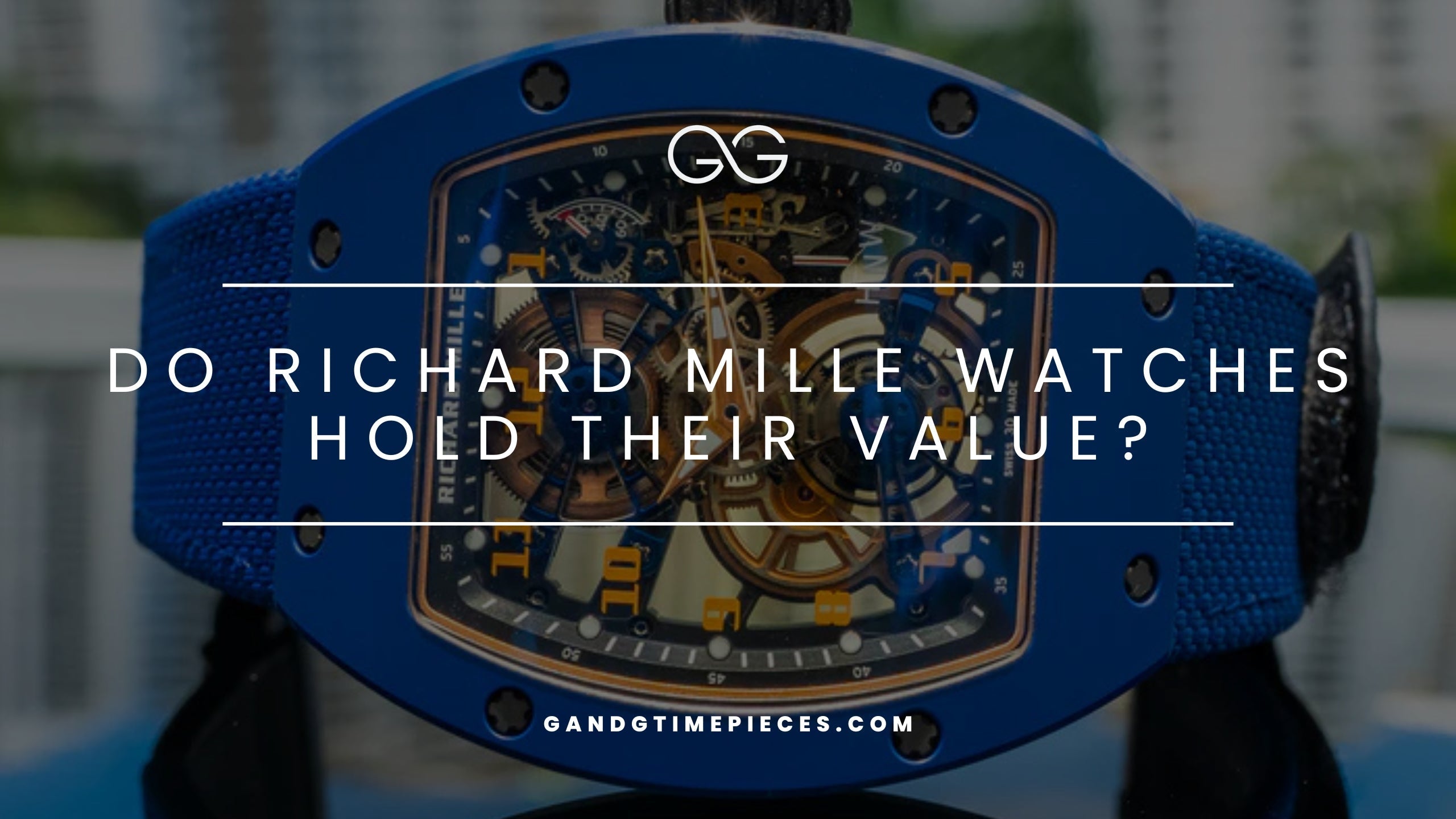The debate that splits luxury watch enthusiasts across the globe: Is Patek Philippe better than Rolex?
Here’s the thing: Patek Philippe and Rolex aren’t really competitors in the traditional sense. They’re both luxury watch brands, sure, but they’re playing entirely different games. One focuses on exclusivity and traditional craftsmanship, while the other dominates through innovation and accessibility. Let’s break down what makes each brand special and help you figure out which direction your wrist (and wallet) should go.
Quick Answer: Patek Philippe vs Rolex Comparison
Before we dive deep, here’s what you need to know upfront about this Patek Philippe vs Rolex showdown:
-
Patek Philippe excels in exclusivity, traditional craftsmanship, and complicated movements, with only 62,000 watches produced annually.
-
Rolex dominates in reliability, innovation, and accessibility, with 1.1 million watches produced yearly.
-
Patek Philippe watches start around $23,000, while Rolex entry models begin at $6,100
-
“Better” depends on priorities: horological artistry (Patek) vs durability and status (Rolex)
The short version? If you want the ultimate expression of Swiss watchmaking artistry and don’t mind paying for extreme exclusivity, Patek Philippe is your answer. If you want a luxury watch that’s built like a tank, recognized worldwide, and won’t break your heart if you actually wear it daily, Rolex is the move.
Brand Heritage and Founding Philosophies

Understanding these brands means going back to their roots, because that DNA still drives everything they do today.
Patek Philippe was founded in 1839 by Antoni Patek and later joined by Adrien Philippe. From day one, they positioned themselves as custodians of traditional Swiss watchmaking. We’re talking about a company that invented the first split-seconds chronograph in 1923 and created the first wristwatch with a perpetual calendar in 1925. They hold over 100 patents, including the perpetual calendar and double chronograph inventions.
Their famous tagline says it all: “You never actually own a Patek Philippe. You merely look after it for the next generation.” That’s not just marketing fluff—it’s their entire philosophy wrapped up in one sentence. These aren’t just timepieces; they’re heirlooms.
Rolex, established in 1905 by Hans Wilsdorf and Alfred Davis, took a completely different approach. While Patek Philippe was perfecting complicated movements, Rolex was solving real-world problems. They created the first waterproof wristwatch with the Oyster case in 1926 and pioneered the self-winding perpetual movement in 1931. Their motto might as well be “A Crown for Every Achievement”—and that practical luxury philosophy shows in every piece they make.
Craftsmanship and Manufacturing Excellence

This is where the philosophies diverge, and both approaches are incredible.
Patek Philippe is all about traditional watchmaking techniques. Every Patek Philippe watch involves extensive hand-finishing—guilloché, enameling, intricate engraving, the works. Their movements are hand-assembled by master craftsmen, often visible through exhibition casebacks that showcase techniques like hand-polished anglage and black polishing. When you buy Patek Philippe, you’re buying centuries of traditional Swiss craftsmanship.
The Patek Philippe seal (their own quality standard that’s even stricter than the official Swiss chronometer certification) ensures every component meets their extremely high standards. These aren’t just complicated watches—they’re mechanical art pieces.
Rolex went the complete opposite direction and absolutely nailed it. They’re masters of vertical integration, controlling virtually every component in-house. We’re talking proprietary materials like 904L oystersteel (the same steel used in aerospace and chemical industries), everose gold, and cerachrom ceramic for bezels.
Iconic Model Comparisons

Let’s get specific and compare the heavy hitters from both brands.
Patek Philippe Signature Collections
Calatrava (1932): This is the quintessential dress watch—minimalist, elegant, timeless. The classic Calatrava represents everything Patek Philippe stands for, with models starting around $30,000. It’s the watch equivalent of a perfectly tailored suit.
Nautilus (1976): Designed by gérald Gentil, this luxury sports watch with its porthole-inspired case has become absolutely legendary. The nautilus is so sought after that waitlists stretch 8+ years, and secondary market prices are absolutely wild. It’s proof that Patek Philippe can do sports watches when they want to.
Aquanaut (1997): The modern, more casual alternative to the nautilus. The Patek Philippe Aquanaut starts at $23,070 for steel models and features a composite strap that’s surprisingly comfortable. It’s Patek Philippe’s attempt at accessible luxury (if you can call $23k accessible).
Grand Complications: This is where Patek Philippe really flexes. We’re talking perpetual calendars, minute repeaters, and complications that most people can’t even pronounce. The Patek Philippe Grandmaster Chime sold for over $31 million at auction. These aren’t watches—they’re mechanical universes on your wrist.
Rolex Legendary Models

Submariner (1953): The archetypal dive watch that defined an entire category. The Rolex Submariner offers 300m water resistance and bulletproof reliability, available for under $10,000 pre-owned. It’s the watch that turned tool watches into status symbols.
Daytona (1963): Made famous by actor Paul Newman, this racing chronograph has achieved legendary status. Paul Newman’s Rolex Daytona sold for $17.8 million at auction, proving that Rolex can play in the collectible space, too.
GMT-Master II (1954): Originally designed for pilots, the GMT-Master II tracks multiple time zones with its rotating bezel. It’s the ultimate travel companion for jet-setters.
Day-Date (1956): The “President” watch, available exclusively in precious metals. When world leaders and celebrities want to flex, this is what they reach for.
Pricing and Market Accessibility
Here’s where the rubber meets the road for most people considering these brands.
Rolex wins on accessibility hands down. The entry-level Rolex Oyster Perpetual starts at $6,100, making luxury watches actually attainable for successful professionals. Most steel sports models range from $7,000 to $15,000 at retail (though good luck finding them at those prices due to demand). Even precious metal Rolex models typically stay under $40,000.
Patek Philippe operates in a completely different stratosphere. The cheapest way into the brand is the Patek Philippe Aquanaut at $23,070 for steel. Most Calatrava collection pieces hover around $30,000, and once you get into complications, we’re talking $100,000+ easily. When people say, “If you have to ask the price, you can’t afford it,” they’re probably talking about Patek Philippe models.
The production numbers tell the whole story: Rolex produces approximately 1.1 million watches annually, while Patek Philippe manufactures only 62,000. That scarcity drives prices up and availability down.
Production Volume and Exclusivity
This might be the biggest differentiator between Rolex and Patek Philippe.
Rolex produces over a million watches yearly, creating the broadest luxury watch market presence globally. Yet even with this volume, demand for iconic models like the Daytona and steel submariner outpaces supply, creating substantial waitlists and grey-market premiums. The brand has somehow managed to be both accessible and exclusive simultaneously.
Patek Philippe takes the opposite approach with extreme exclusivity. Those 62,000 annual pieces aren’t just limited—they’re painstakingly crafted using traditional watchmaking techniques that can’t be rushed. Popular models like the Nautilus have multi-year waitlists that make Rolex waiting periods look reasonable.
Investment Potential and Resale Value
Both brands maintain exceptional resale value, but for different reasons.
Patek Philippe generally commands higher premiums on the secondary market due to pure rarity. The Henry Graves supercomplication sold for $24 million, setting auction records that still stand. Most Patek Philippe watches hold their value incredibly well, with popular models often appreciating significantly.
Rolex offers more liquid investment potential. Vintage models, especially the Paul Newman Daytona, Submariner, and vintage GMT pieces, are incredibly sought after by watch collectors. The Paul Newman Daytona’s $17.8 million sale proves that Rolex can compete in the ultra-high-end auction space.
The key difference? Rolex watches are generally easier to buy and sell, while Patek Philippe pieces often require specialized dealers and longer transaction times. Both represent solid investment potential, but Rolex offers more flexibility.
Expert Opinions and Industry Recognition
The watch industry consistently places both brands at the absolute top, but in different categories.
Patek Philippe is universally considered part of the “Holy Trinity” of Swiss brands alongside Audemars Piguet and Vacheron Constantin. Horological experts praise their mastery of complications, finishing, and traditional techniques. When other watch brand executives want to benchmark excellence, they look at Patek Philippe’s approach to complicated watches.
Rolex dominates from a business perspective. With 7.7 billion in annual revenue compared to Patek Philippe’s 1.5 billion, Rolex leads the luxury watch market in virtually every metric except exclusivity. Industry professionals consistently recognize Rolex’s innovation, reliability, and market leadership.
Celebrity and Cultural Impact

The celebrity factor reveals a lot about each brand’s positioning.
Rolex enjoys massive cultural exposure. You’ll spot Rolex watches on celebrities like Robert Downey Jr., Kevin Hart, Mark Wahlberg, and Floyd Mayweather. The brand sponsors major sporting events in golf, tennis, motorsports, and yachting. Rolex has become the default luxury watch for achievement and success.
Patek Philippe attracts a more understated, sophisticated clientele. Queen Elizabeth II, Brad Pitt, and Tom Holland represent the type of discerning collector who appreciates Patek Philippe’s approach. The brand maintains deliberate distance from flashy sponsorships, preferring to let the timepieces speak for themselves.
Aside from the Steve McQueen Explorer II, Rolex tends to be more visible in popular culture. At the same time, Patek Philippe remains the choice of serious watch enthusiasts and collectors who value horological prestige over brand recognition.
Final Verdict: Which Brand is Better?
So is Patek Philippe better than Rolex? Here’s the honest answer: it depends entirely on what you value most.
Choose Patek Philippe if you want:
-
The ultimate expression of traditional Swiss watchmaking
-
Extreme exclusivity and rarity
-
An heirloom piece that appreciates over generations
-
The finest hand-finishing and complications available
-
To join an elite group of serious collectors
Choose Rolex if you want:
-
Proven reliability and durability for daily wear
-
Substantial resale value with better liquidity
-
Broader accessibility and shorter wait times
-
Tool watches that perform as well as they look.
-
Global recognition and status symbol appeal
Both brands represent exceptional quality in the luxury watch market. Patek Philippe wins for traditional craftsmanship and exclusivity, while Rolex excels in innovation, reliability, and accessibility. The “better” choice depends on your personal priorities, lifestyle, and budget.
Ready to explore luxury watches from both legendary brands?
At G&G Timepieces, we specialize in helping collectors and enthusiasts find their perfect timepiece, whether it’s a Patek Philippe masterpiece or a Rolex icon. Browse our curated selection or reach out to discuss which direction might be right for your collection.
Frequently Asked Questions About Patek Philippe vs Rolex
What are the most iconic Patek Philippe collections?
Patek Philippe has created numerous iconic models, including the Patek Philippe Calatrava, a classic dress watch, and the Patek Philippe Nautilus, one of the most recognizable luxury sports watch collections.
What are Rolex’s legendary models?
Rolex is equally famous for its iconic collections. Standouts include the Rolex Submariner, the Daytona, the GMT-Master II, and the Rolex Sky-Dweller. These bracelet chronometers combine durability, technical innovation, and style, appealing to both Rolex fans and collectors of vintage watches.
How do Patek Philippe and Rolex compare as luxury brands?
Comparing Rolex and Patek Philippe highlights two Swiss watchmakers with different philosophies. Patek Philippe emphasizes exclusivity, fine horology, and complications, while Rolex focuses on durability, accessibility, and global recognition. Both luxury brands represent exceptional timepieces, but they appeal to different priorities within the modern watchmaking industry.
Are Patek Philippe and Rolex watches good investments?
Yes, both brands offer strong investment potential. Patek Philippe models, due to scarcity and artisanal craftsmanship, often appreciate significantly, with rare pieces breaking records at auctions. Rolex, thanks to its global recognition and history of reliable production, provides more liquidity, with vintage watches like the Daytona and Submariner commanding impressive premiums.
Do both Rolex and Patek Philippe advertise watches differently?
Yes, both luxury brands take distinct approaches. Patek Philippe advertises watches with an emphasis on heritage and passing timepieces down generations. Rolex advertises watches by linking them to achievement, adventure, and performance, appealing to a broader audience of Rolex fans worldwide.





